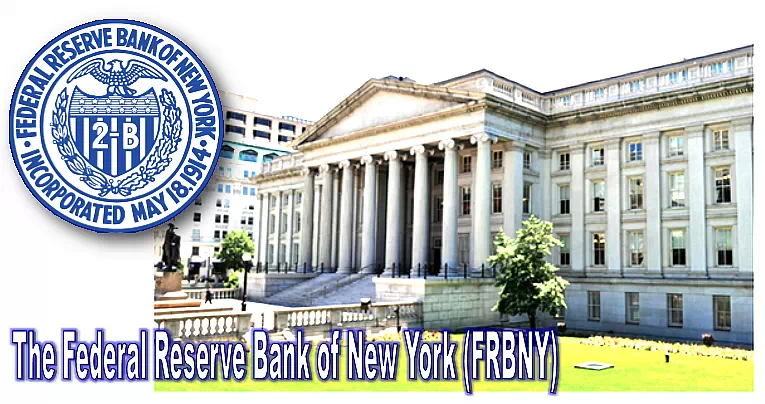Where Is The Secret Gold Hidden?
Countries save up gold as for future use. In need of trading or time, countries buy and sell gold as we do.
Here gold is not shifted from country to country. They simply exchange the gold by shifting it around bank vaults. They buy and sell gold worth of billions of dollars in secret.
Where countries do store their gold in secret?
The international place to save gold is FRBNY.
The Federal Reserve Bank of New York (FRBNY)
The Federal Reserve Bank of New York (FRBNY) is the most pursued bank for saving gold by countries. Around 122 countries have accounts to stash gold in FRBNY. More than a quarter of the world’s gold is saved in this bank. There is a single vault of 24 m (80 feet) below the New York streets to store the gold.
It is rather difficult to say the exact amount gold saved up by a particular country because many countries do not wish to declare gold exactly they have in reserve.
The quantity of gold contained in FRBNY is estimated as more than 7250 metric tons (8000 tons).
The unit of weight used for measuring precious metals like gold, pearls, diamonds, etc. is a ‘troy ounce’. One troy ounce equals to 31.1 grams.
Gold of each country is stored in separate vaults in the form of bricks and bars.
Gold is stored in bank’s vaults mostly in the form of bars (like bricks). Each brick weighs nearly 400 troy ounces (12.4 kg or 27 lb). The present price of one brick of 24 carat gold is around $885,550 (in Feb, 2024).
Not only bricks tiny bars (nicknamed as ‘Hershey bars’) are also stored in vaults. These tiny Hershey bars are in form of chocolate bars made by Hershey Company, a confectioner in the USA.
The Piled-up layers of gold bars look like brick walls.

Why do countries prefer to put their gold in FRBNY?
The reason is inter-trading of gold in FRBNY is very safe and easy. There is no risk of transporting from place to place across the world. Only gold bricks are shifted from vault to vault of respective countries. The process is simple when two countries agreed for trading the gold. They intimate the bank about the deal so that the right number of bricks from the vault of seller-country are shifted to the vault of buyer-country.
It is not possible to know proprietary of vaults. Every country’s vault is given a secret code number so others cannot identify the owner-country. The gold bricks are piled up in compartments in the chest. The largest single compartment in the bank consists of 107000 bars of gold.
The transactions are carried in such a way that nobody has to worry about shifting of gold around the world.
In all transactions, every precautionary measure is taken from FRBNY in shuffling the gold bricks around FRBNY vault.
The main precautionary measures taken by FRBNY while shifting the gold between vaults:
- Each and every bar is weighed as per the record.
- Every bar is tested and checked for the quality of the gold by FRBNY officials.
Topnotch Security System:
The security system is impeccable.
The entrance passage to the vault is narrow in a giant steel cylinder. The cylinder is made of steel of 100-ton (90-metric ton). The steel cylinder’s entrance door is unique in its design. The cylinder is of rotating type to open or block the passage and thus the vault is sealed.

The cylinder is secured by eight bolts with different combinations. No single person knows all the combinations. So all the eight people are needed to open the door to enter into the vault.
Bank Notes versus Gold in Reserve.
Bank notes are just receipts of gold reserves in a country. The value of notes should match the amount of gold in reserve.
More money is needed to be in circulation for economic growth of a country. But it has adverse effects too like “fractional reserve banking.”
What is “fractional reserve banking”?
If the banks simply print more bank notes for the purpose of economic growth not considering the gold in reserve, the gold reserves become a fraction of the value of the notes in circulation. In troubled times like wars, the banks might not have enough money to pay everyone. This leads to “fractional reserve banking”.
To contain this type of fiscal-collapse, governments set up central banks. The US Federal Reserve Bank, the Bank of England, the Reserve Bank of India, etc. are such central banks established by respective countries.

Most of the country’s reserves of gold are held by these central banks. Accordingly they issue bank notes.
Modern Balancing of Economics in a country.
Initially, a country’s money in circulation depended on its gold reserves. But the scenario is different now. It is now entirely on the heads of central banks of each country. The heads of the central banks meet regularly in secret. They evaluate the percentage of interest to be paid on bank loans and decide how much money is to be in circulation in the country. This way the economics of a country is well-balanced.

